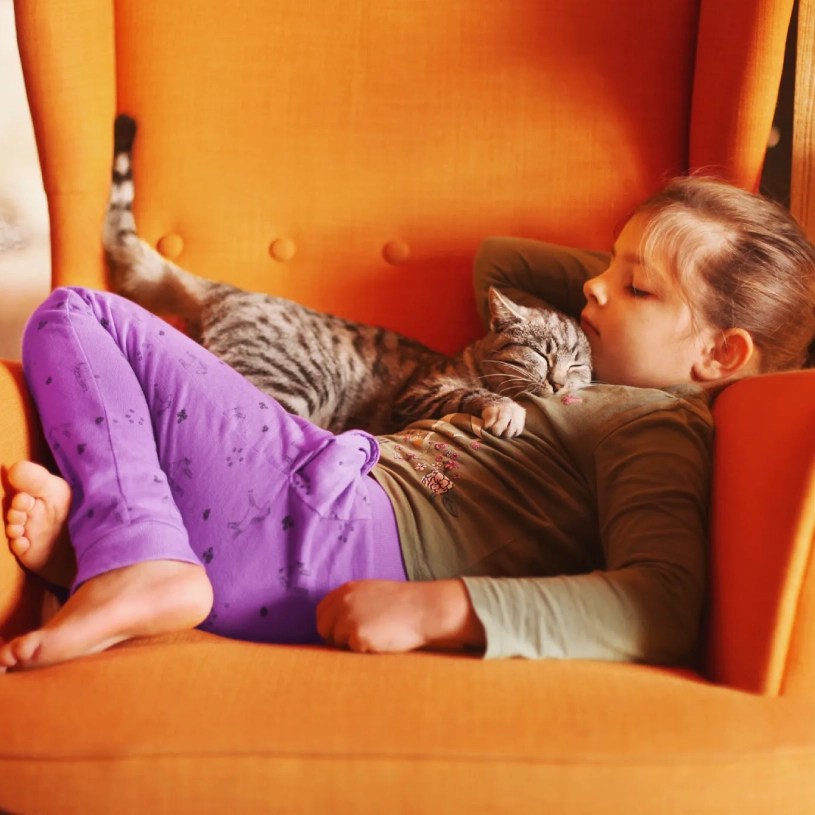알레르기엔 알레그라® | 실내 알레르기비염의 원인, 증상 및 완화
집 안 알레르기 비염 | 원인과 증상, 완화 방법
.webp/jcr:content/Allegra_Wonka_Article_Images_Cold%20Or%20Allergie%20_02_Global%20(1).webp 400w,/.imaging/webp/sanofi-chc/img-w500/dam/allegra-kr/pages/understanding-allergies/indoor-allergies/Allegra_Wonka_Article_Images_Cold-Or-Allergie-_02_Global-(1).webp/jcr:content/Allegra_Wonka_Article_Images_Cold%20Or%20Allergie%20_02_Global%20(1).webp 500w,/.imaging/webp/sanofi-chc/img-w600/dam/allegra-kr/pages/understanding-allergies/indoor-allergies/Allegra_Wonka_Article_Images_Cold-Or-Allergie-_02_Global-(1).webp/jcr:content/Allegra_Wonka_Article_Images_Cold%20Or%20Allergie%20_02_Global%20(1).webp 600w,/.imaging/webp/sanofi-chc/img-w700/dam/allegra-kr/pages/understanding-allergies/indoor-allergies/Allegra_Wonka_Article_Images_Cold-Or-Allergie-_02_Global-(1).webp/jcr:content/Allegra_Wonka_Article_Images_Cold%20Or%20Allergie%20_02_Global%20(1).webp 700w,/.imaging/webp/sanofi-chc/img-w800/dam/allegra-kr/pages/understanding-allergies/indoor-allergies/Allegra_Wonka_Article_Images_Cold-Or-Allergie-_02_Global-(1).webp/jcr:content/Allegra_Wonka_Article_Images_Cold%20Or%20Allergie%20_02_Global%20(1).webp 800w,/.imaging/webp/sanofi-chc/img-w900/dam/allegra-kr/pages/understanding-allergies/indoor-allergies/Allegra_Wonka_Article_Images_Cold-Or-Allergie-_02_Global-(1).webp/jcr:content/Allegra_Wonka_Article_Images_Cold%20Or%20Allergie%20_02_Global%20(1).webp 900w)
집에만 오면 콧물과 재채기가 심해지나요?
집 안에서 발생하는 알레르기 비염은 생각보다 흔한 문제입니다. 집먼지 진드기, 곰팡이, 반려동물 털, 바퀴벌레 알레르기, 물 알레르기 등 다양한 요인들이 원인으로 작용합니다. 알레르겐은 알레르기 반응에 관여하는 항원물질입니다. 수백만 명의 사람들이 실내 알레르겐 때문에 일년 내내 고통을 겪습니다. 실내 알레르기비염의 가장 흔한 원인은 집먼지 진드기, 곰팡이, 반려동물 털, 바퀴벌레 알레르기, 물 알레르기 등 다양한 요인들이 원인으로 작용합니다.
즉, 집을 깨끗이 유지할수록 실내 알레르기비염에 대한 방어력이 강해집니다.
알레르기 비염 유발 요인을 줄이면 실내에서도 편안한 생활이 가능합니다. 알레그라®와 함께 실내 알레르기 비염의 원인, 증상, 완화 방법을 자세히 알아보세요!
이 기사에서는 다음의 정보를 확인하실 수 있습니다.
실내 알레르기 비염 증상
알레르기 반응은 면역체계가 방어에 나섰다는 뜻입니다. 알레르겐이 감지되는 즉시 면역글로불린E(IgE)라는 항체를 생성하게 됩니다. 이에 대한 반응으로, 여러분의 세포는 알레르기 증상을 초래하는 알레르겐에 맞서기 위한 화학물질을 방출합니다.
실내 알레르기비염의 대표적인 증상은 다음과 같습니다.
콧물, 재채기
코막힘
코 가려움
눈 가려움 및 눈물
대부분의 실내 알레르겐이 발생하는 곳은 다음과 같습니다.
축축하고 습한 곳
실내 식물
반려동물
베개 및 침구류
봉제 가구 및 장난감
밀봉되지 않은 매트리스
바닥 또는 벽에 건 카펫
집 안 먼지 진드기, 곰팡이, 반려동물 비듬, 바퀴벌레까지! 알레르기 유발 요인 완벽 공략
먼지 진드기 퇴치 대작전
알레그라®와 함께 실내 알레르기 비염의 주요 원인과 대처법을 알아보고 쾌적한 실내 환경을 만들어 보세요.
침구류 관리침구류는 먼지 진드기의 온상입니다. 베개와 매트리스에는 알레르기 방지 커버를 씌우고, 50℃ 이상의 뜨거운 물로 자주 세탁하세요. 햇볕에 말리는 것도 잊지 마세요.
카펫 및 커튼 관리바닥 전체를 덮는 카펫과 두꺼운 커튼은 먼지 진드기의 서식지가 될 수 있습니다. 가능하면 카펫 사용을 줄이고, 커튼 대신 블라인드를 사용하는 것이 좋습니다.
청결 유지바닥과 가구 위 먼지를 꼼꼼히 제거하세요. 봉제 인형 등 먼지가 쌓이기 쉬운 물품은 최소화하는 것이 좋습니다.
습도 관리먼지 진드기는 습한 환경을 좋아하므로, 제습기를 사용해 실내 습도를 낮추세요.
실내 곰팡이
알레르기비염을 일으키는 흔한 실내 곰팡이와 흰곰팡이는 습기가 있는 환경에서 잘 자랍니다. 습기가 많은 지하실, 욕실, 또는 물이 새는 곳이라면 어디든지 찾아볼 수 있을 것입니다.
곰팡이를 줄이는 방법
습기 제거욕실, 주방, 지하실 등 습기가 많은 곳은 환풍기를 사용하고 자주 환기하세요. 샤워 후에는 욕실 문을 열어두어 습기가 빠져나가도록 하세요.
누수 관리누수는 곰팡이 발생의 주범입니다. 누수가 발생하면 즉시 수리해 습기가 차지 않도록 해야 합니다.
곰팡이 제거물과 세제, 또는 5% 차아염소산나트륨(락스) 용액으로 곰팡이를 깨끗이 닦아내고 완전히 건조시키세요.
제습기를 사용해 보세요.
가정에서 키우는 실내 식물의 수를 적절한 정도로만 제한하세요.
반려동물의 비듬
내가 키우는 반려동물이 털이 없더라도, 알레르겐에서 100% 자유로울 순 없습니다. 왜냐하면 인체는 반려동물의 털, 타액(침), 비듬 또는 소변의 알레르겐에 반응하기 때문입니다.
반려동물의 비듬을 관리하는 방법3
반려동물과 직접 접촉하지 마세요.
반려동물을 침실에 들여놓지 마세요.
반려동물용 침대와 장난감을 자주 씻고 갈아주세요.
반려동물을 자주 목욕시키고 이빨을 닦여 주세요. 반려동물을 빗질해줄 때는 마스크 착용을 권장합니다.
반려동물을 만진 후에는 손을 씻으세요.
반려동물의 공간을 자주 닦아주고, 진공청소기를 사용하여 청소해 주세요.
반려동물을 키우기 전에, 전문의와의 상의를 통해 반려동물에 대한 알레르기가 있는지 확인하세요.
바퀴벌레, 절대 용서 못해
세계보건기구는 바퀴벌레에 의해 발생하는 12개의 다른 알레르겐을 고지하고 있습니다.
음식물 관리음식물과 쓰레기는 밀봉하여 보관하고, 즉시 처리해야 합니다. 싱크대 주변을 깨끗이 유지하는 것도 중요합니다.
청결 유지식사 후에는 주변을 바로 청소하고 설거지를 미루지 마세요. 가스레인지와 냉장고 밑 등 바퀴벌레가 숨어들기 쉬운 곳도 자주 청소하세요.부비동이나 천식을 자극할 수 있는 화학물질 대신 독이든 미끼, 붕산, 트랩을 사용하세요
바퀴벌레 퇴치독이 든 미끼, 붕산, 트랩 등을 사용하여 바퀴벌레를 퇴치하고, 틈새를 막아 바퀴벌레가 들어오는 것을 방지하세요.
알레르기 비염엔 알레그라®! *알레르기비염 증상 완화
알레그라®는 나의 편안한 실내 생활을 위해 도움을 줍니다. 즉, 알레그라®는 현대인의 삶의 질 향상에 도움을 주는 알레르기비염 약입니다.
3세대 항히스타민제인 알레그라®는 효과가 빠르고 졸음 유발이 적으며 최대 24시간 동안 약효가 지속되었습니다. 만일 코막힘, 콧물, 재채기, 눈/코 가려움증 등으로 인해 불편함을 겪고 있다면 알레그라®가 여러분의 알레르기비염 증상 완화에 효과적으로 도움이 될 수 있습니다.※ 3세대 성분들의 경우, 2세대의 개선 성분으로 2세대에 포함시키는 경우도 있습니다.
알레르기 비염, 이제 알레그라®로 해결
편안한 실내 생활을 위한 필수템, 알레그라®
알레르기 비염, 참지 말고 해결하세요
실내 알레르겐에서 완전히 자유로워지기는 어렵겠지만, 최소한으로 줄일 수 있는 방법이 있습니다.
공기를 가능한 청정한 상태로 유지하세요.
환기를 통해 바깥공기가 잘 순환되도록 하세요.
습기를 제거하세요.
알레르기 및 천식 유발 물질 필터가 인증된 공기 청정기를 사용하세요.
진공청소기로 자주 청소하세요.
집안일을 할 때 마스크를 쓰십시오.
청소 후 몇 시간은 집을 비워 둔 채 환기하세요.

실내 알레르겐을 최소화하기 위한 팁
실내 알레르겐에서 완전히 자유로워지기는 어렵겠지만, 최소한으로 줄일 수 있는 방법이 있습니다.3
- 공기를 가능한 청정한 상태로 유지하세요.
- 환기를 통해 바깥공기가 잘 순환되도록 하세요.
- 습기를 제거하세요.
- 알레르기 및 천식 유발 물질 필터가 인증된 공기 청정기를 사용하세요.
- 진공청소기로 자주 청소하세요.
- 집안일을 할 때 마스크를 쓰십시오.
- 청소 후 몇 시간은 집을 비워 둔 채 환기하세요.
1. Andrew Moore, MD, reviewed. Indoor Allergens, American Academy of Allergy, Asthma & Immunology [aaaai.com], February 28, 2020. Reviewed on May 20, 2021.
2. Anna Pomés, Martin D. Chapman, Sabrina Wünschmann. Indoor Allergens and Allergic Respiratory Disease, PMC/US National Library of Medicine, National Institutes of Health, June 2016. Reviewed on Oct. 5, 2021.
3. Asthma and Allergy Foundation of America, Ed. Control Allergens to Improve Indoor Air Quality, Reviewed by Medical Scientific Council, 2015. Reviewed on Oct. 5, 2021.
4. Olasińska-Wiśniewska A, et al. Postepy Dermatol Alergol. 2014;31(3):182-6.
5. Bousquet J, et al. Nat Rev Dis Primers. 2020;6(1):95.
6. Mark E. Efficacy and tolerability of 2nd and 3rd gen antihistamines (2010)
7. Day J H, et al. Ann Allergy Asthma Immunol. 1997;79(6):533-40.
8. Smith S M et al. Expert Opin Drug Metab Toxicol (2009)
9. Peter H the efficacy and safety of fexofenadine and cetirizine in seasonal AR
10. 식품의약품안전처. 의약품통합정보시스템. 알레그라정120밀리그람 (Accessed December 15. 2021.
https://nedrug.mfds.go.kr/pbp/CCBBB01/getItemDetail?itemSeq=199801016).
11. 알레르기성 비염, 항원 확인하는 방법과 치료법 https://blog.naver.com/hanaent6925/223735386081
13. Cockroach Allergy https://my.clevelandclinic.org/health/diseases/25229-cockroach-allergy

